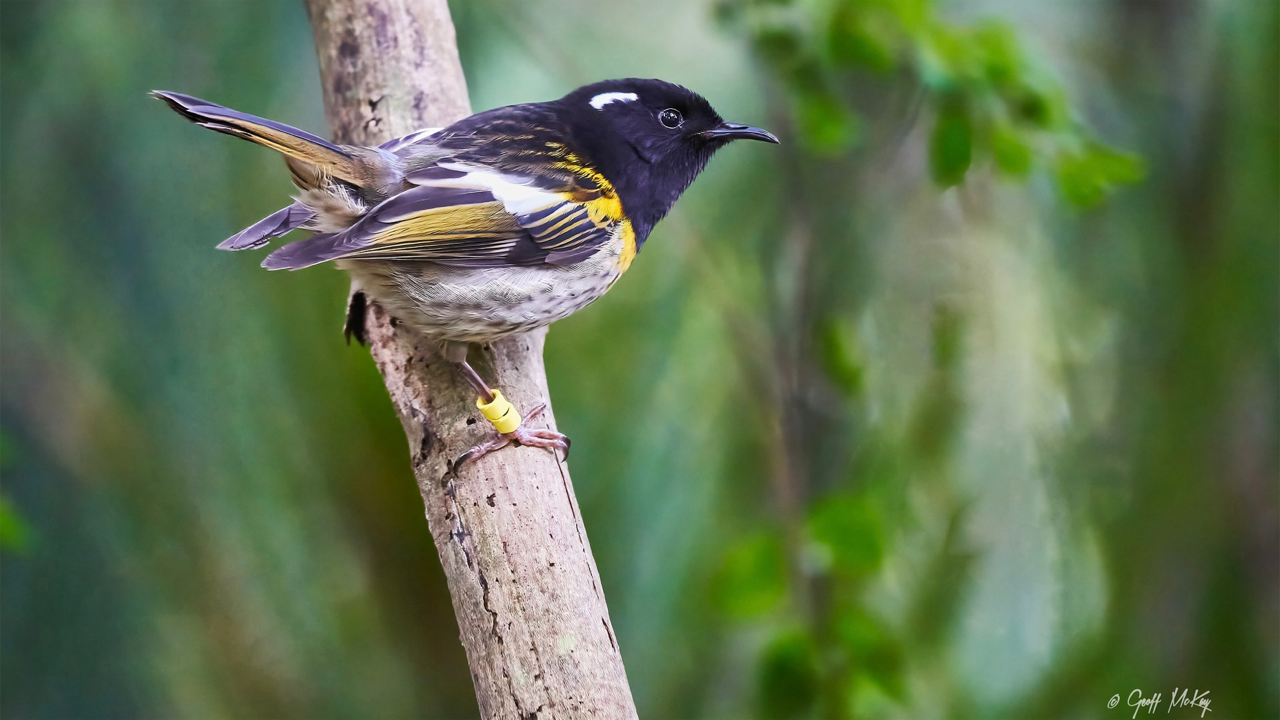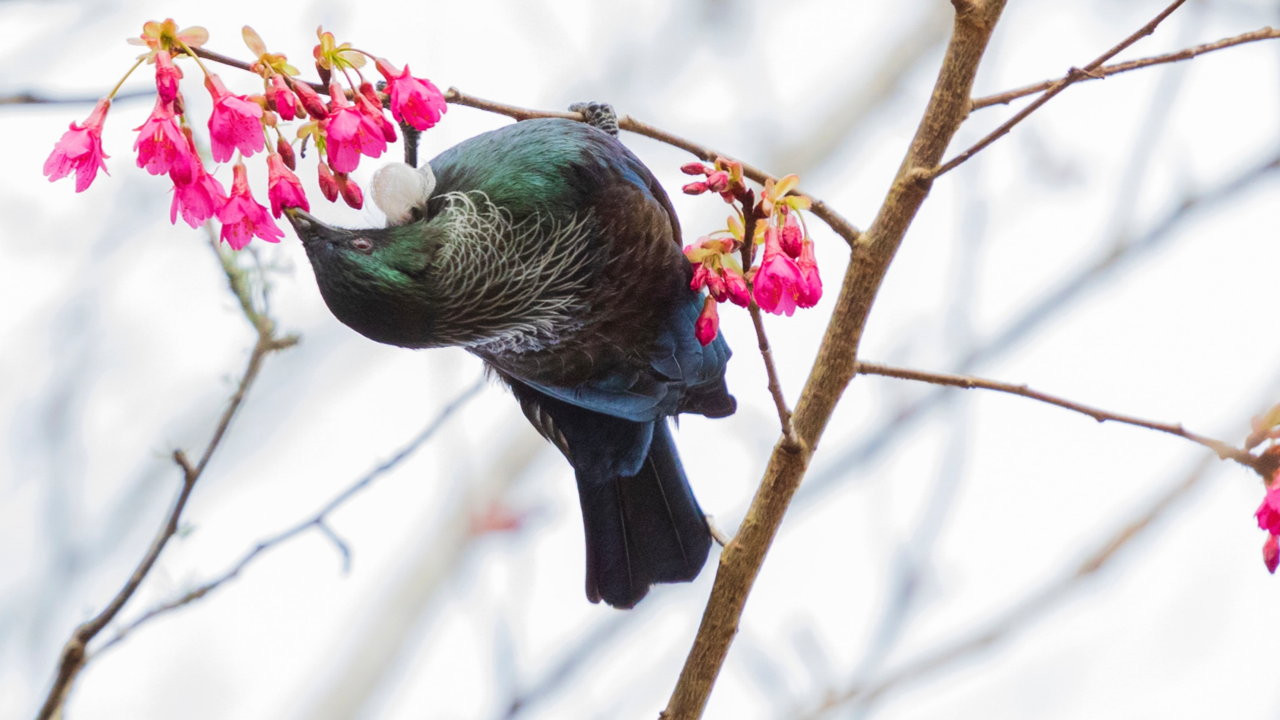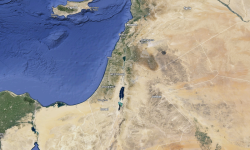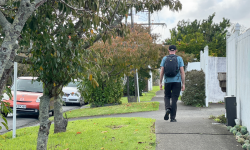
This occasional weekend column called ‘Pondering:…’ is where people from within the 'Team of 40,000 Baptists' can share issues they are thinking about, in a way that opens up a topic from a particular perspective. Feel free to comment on these pieces or contribute your own pondering. Opinion pieces are the views of individuals and need to be considered within the context of the diversity of our union of Baptist churches in New Zealand. When commenting or contributing please follow our Guidelines for articles, opinion pieces and online comments.
This pondering below comes from Brendan Donnell from Windsor Park Baptist Church. He writes in response to Mike Crudge’s 'Pondering: Governance of our Tribe' (03 June 2023). Brendan has been involved in Baptist Churches around New Zealand over the last 40 years. He is married with two children, a structural engineer by trade, and currently lives in Tāmaki Makaurau.
In response
I’d like to express my thanks to Mike Crudge for his recent opinion piece on the “Governance of our Tribe” [1]. Firstly, it brought to my attention the Baptist Union of New Zealand constitutional review that is currently underway and then initiated a conversation about what we might want the governance of our tribe to look like – particularly in light of our Treaty Affirmation Statements [2], but also considering the broader diversity of our 40,000 brothers and sisters who belong within the New Zealand Baptist community.
Consider the birds…
I read Mike’s article on my smartphone while I was wandering through the Kāpiti Island nature reserve – a tranquil island bird sanctuary that is home to rare birds such as kākā, kōkako, takahē and hihi (and is also blessed with great tour guides like my brother).
It got me thinking about bird sanctuaries as a metaphor for the church. Of course, rare birds are free to live anywhere in Aotearoa, just like Christians are free to choose a life outside the church. But sanctuaries provide an environment which actively promotes their well-being – providing nourishment, socialisation, and caring overseers who can offer support in times of crisis and are vigilant to keep the habitat predator-free.
With the existence of these sanctuaries, there is a better chance that enchanting birdsong will be heard outside its boundaries, spreading into the surrounding areas. Restoration and repopulation of the surrounding mainland is a motivating vision for any sanctuary, no matter how much focus is needed on sheer survival in the short term.
Observing activity at one of the bird sanctuary’s feeding stations, it became clear that the korimako (bellbird) ruled the roost. Confidently flitting into the feeder cage, they seemed comfortable to enjoy the sugary water that appeared to have been laid out for their benefit. By contrast, the hihi are smaller, rarer birds who hang back warily from the feeder station, waiting until the korimako have drunk their fill and moved on before they will approach. The trees that hihi feed on have suffered greater damage due to historical deforestation, to the extent that they struggle to survive in the regenerating bush of the island sanctuaries unless specific nutrition is provided for them.
The well-being of the hihi may have been first on the list of good reasons for introducing feeder stations to the island, but it is obvious to a casual observer that they are the lowest in the pecking order when accessing the nourishment they need.
Mike’s piece about “The Governance of our Tribe” gave me food for thought – how well are the feeder stations working in the 250 sanctuaries which make up the Baptist Union in New Zealand? Are there any habits that could be affecting accessibility, and how could our constitutional review address them?
Kia whakatōmuri te haere whakamua (walking into the future with eyes on the past)
One particular issue springs to mind, which is rooted in some of our earliest history as a movement. One of the first chapters in the New Zealand Baptist story starts with the establishment of a Baptist congregation in Wellesley Street in Auckland in 1855 [3] (a few years after Nelson Baptist had been founded). The fledgeling church was outward-focused and would run outreaches down at Queen Street Wharf, a bustling hub for seafarers and settlers.
This ‘feeding station’ was quickly successful, and the church community grew and flourished. By 1885, the church had moved to the Tabernacle in Upper Queen Street – a church that seated 1,500 in a city of around 30,000 people [4,5]. Rev. Thomas Spurgeon was committed to outreach amongst Māori [6], but after an early mission in Rotorua struck difficulty and was abandoned in the mid-1880s, Baptists nationwide caught a vision for mission in East Bengal, India [7].
Our ‘feeder stations’ were working well, a source of life-giving nourishment to a growing variety of exotic birds at home and abroad. But standing here with the unique perspective that 2023 brings, I can’t shake the feeling that some precious birds may have been ignored as they perched around the periphery, a safe distance from the feeder stations.
I fear that our Māori brothers and sisters have been left on the periphery of the Baptist community too often over the intervening years. I recognise and honour the significant work of Manatū Iriiri Māori (Baptist Māori Ministries) and a number of other ministries over many decades [7], but I still sense that te ao Māori has been excluded or ignored by most of our congregations.
Is this a legacy issue that we now have an opportunity to address at a constitutional level?
Steps to celebrate
This leads me to a point of celebration for the many important steps our movement took in the last 5-10 years. The Treaty Affirmation Statements of 2018 [2] established our aspirations for positive engagement with te ao Māori as a community of churches.
Carey Baptist College has started the journey of reshaping its internal leadership, campus environment, and leadership training as part of its tiriti hikoi (treaty journey) [8]. NZBMS, now known as Arotahi, are exploring opportunities for Māori-led mission to Māori [9].
I am pleased to hear that the current nominations list for the Assembly Council includes at least two Māori candidates who are making themselves available to stand for election at the annual National Baptist Hui next month.
So much of this has been made possible through the gracious guidance and support of the Te Kapa Rautaki team, who I see as a taonga for our community. Perhaps there is an opportunity to benefit even more by permanently including Māori voices in our leadership structure, ideally at a constitutional level.

Counting the costs…
Mike’s article suggests that a minimum number of Māori representatives could be included on our Assembly Council – the elected representative group that governs between Assemblies/Hui. There are a number of other constitutional options that could also be explored, such as a Māori national co-leader to oversee the strategic and spiritual well-being of the movement… or a group of Māori elders with a constitutional role to provide leadership, guidance, and oversight to governance bodies across the denomination… or all of the above?
Our Māori leaders can play an essential role in guiding our course, and I would suggest our union invite them to do just that.
I expect there would be some costs associated with such constitutional changes:
>> Financial pressure – our limited financial resources for governance may be stretched further if resources are invested in Māori leadership.
>> Time delays - deeper engagement and learning from Māori perspectives might mean that consensus decision-making is slower in the short term.
>> Less ‘oneness’? – as a Baptist community, we value egalitarian approaches, asserting the priesthood of all believers and allowing church members to vote on the important decisions facing each church as a way to discern the mind of Christ together. A future path that recognises a special role for tangata whenua will understandably challenge some of our ideas about what ‘oneness’ should look like.
>> Discomfort – There could be some discomfort as we are triggered to redress past shortcomings, question our perspectives, and consider new habits.
…and counting the benefits!
We must also keep the potential benefits of constitutional Māori leadership in mind:
>> Authenticity – as Christians, we are familiar with covenants. A covenant defines obligations and commitments between two partners in a way that is more relational and personal than a contract. God makes a number of covenants as his plan for reconciliation with people unfolds through scripture. As Christians, we have found our place in this covenant story; we’ve learned to acknowledge the ways we have fallen short of our commitments in this relationship, humbly change course, and become ambassadors for reconciliation to others who are in the same boat – always relying on Jesus to make this journey possible. Our journey towards faithfulness to Te Tiriti o Waitangi involves many similar challenges and creates an opportunity to demonstrate what we have learned about living in right relationship with one another – practical evidence of our covenant partnership with God as he renews the world.
>> Creativity – a constitutional role for tangata whenua could support the goal in the Baptist Union’s 2018 Treaty Affirmation Statements to develop “systems within our churches, ministries and mission, appropriate to Tāngata Whenua” [7]. There is something creative, joy-filled and energising about our treaty journey as we explore what this future could look like.
>> Future relevance – something is changing within New Zealand culture. There are reports from Wellington of predominantly white, middle-class New Zealanders flocking to te reo Māori language classes (schools which previously ran two level-one night classes were offering seven classes in 2017, with class enrolments filling up within a week) [10]. In 2020, the number of teenagers studying te reo Māori passed 30,000 for the first time [11]. New Kiwis for whom English is a second language are also signing up. In addition, Statistics NZ predicts that the share of children who are Māori will increase to 1 in 3 by 2043 [12]. Our treaty journey matters to an emerging generation of Māori and pākeha/tauiwi, both inside and outside our Baptist tribe.
>> Credibility – in an increasingly polarised and post-Christian society, it’s increasingly easy to dismiss the relevance of the church. Our leadership structures can help us gain insight from the perspective of our Māori leaders and leaders from the diverse range of non-Māori people as we seek a shared conviction about what God is saying to us. I suspect this shared voice would make us more credible communicators to our increasingly diverse community.
>> Hospitality – embedding Māori leadership in our constitution creates the opportunity for their flavour to infuse throughout our churches. I’m excited about the opportunities it could create for Māori people to feel more welcome in our churches.
Benefits of diversity
Mike’s article identifies a range of other distinctive qualities that he believes would offer benefits for the governance of our tribe. I would support his view that the ethnicity, gender, age, occupation, locality, and theological viewpoint of each leader give them unique perspectives and insights. These perspectives are invaluable at a governance level if we want to understand and support the health of our diverse communities, both inside and outside the church.

Mike suggests a matrix of priorities when electing governance groups to ensure that a diverse range of perspectives are represented. In my experience, the nomination of suitable candidates by trusted (and prayerful) advisors will often result in them being elected by the wider church. By applying a matrix of priorities to our nomination process and search for candidates, there might be little need to impose any constitutional quotas on our governance boards. Shoulder-tapping potential leaders and inviting them to stand for election can be a more appropriate way of seeking nominations in many non-European cultures. It would be more proactive than waiting for the right people to put themselves forward.
Authentic integration of diverse ethnicities in a church community can be a challenging journey! There can be exciting honeymoon periods, tensions to navigate as people adapt to change, times of complacent co-existence after the early chaos, and moments where we are called to recommit our efforts in the hope that we will emerge at a place of greater understanding and trust – leading to genuine collaboration [13]. These lessons learned within a multi-ethnic church community can be invaluable as we embark on our ‘treaty journey’ together. Similarly, our treaty journey can help us grow better into a multi-ethnic, intercultural church.
Executive summary
As a Baptist churchgoer, I feel there are promising signs in our collective journey to affirm the Treaty of Waitangi over recent years, but the journey is just beginning. Using a bird sanctuary as a metaphor for the church, I can’t help but feel there is still a pecking order for access at our Baptist ‘feeder stations’.
The current review of our constitution and governance creates an opportunity to formalise Māori leadership within our team of 40,000 – a step with exciting potential to enhance the well-being of the diverse flocks who find their home in and around our sanctuaries.
Luke 12:6-7
Kahore ianei e hokona nga pihoihoi e rima ki nga patene e rua? A kahore tetahi o ratou e wareware i te Atua? Heoi kua oti katoa te tatau nga makawe katoa nei o o koutou matenga. Kaua e wehi: engari koutou i nga pihoihoi maha.
Five sparrows are sold for only a few cents, but God doesn't forget a single one of them. Even the hairs on your head are counted. So don't be afraid! You are worth much more than many sparrows.
Read other contributions to our ‘Pondering...’ column here.
Advertisment:
Listeners Choice Awards 2023
Vote for your favourite podcast show on the Baptist NZ Podcast Network - voting closes Friday 27 October 2023. More details here...

End notes
[1] Crudge, M. (June 2023), Pondering the governance of our tribe, website of the Baptist Churches of New Zealand, https://baptist.nz/pondering-governance-of-our-tribe/, accessed 20/09/2023.
[2] Treaty Affirmation Statements (Oct 2018), website of the Baptist Churches of New Zealand, https://baptist.nz/te-tiriti-o-waitangi/, accessed 20/09/2023.
[3] Our History, website of the Auckland Baptist Tabernacle, https://www.tabernacle.org.nz/our-history.html, accessed 20/09/2023.
[4] Auckland Baptist Tabernacle, https://en.wikipedia.org/wiki/Auckland_Baptist_Tabernacle, accessed 20/09/2023.
[5] Results of a census of the colony of New Zealand, website of Statistics New Zealand, https://www3.stats.govt.nz/historic_publications/1886-census/Results-of-Census-1886/1886-results-census.html#d50e39247, accessed 20/09/2023
[6] Bullen, Rev. R., Failure of a Mission, the story of a last century effort by Baptists to evangelise the Maoris (electronic copy accessed from Carey Baptist College Library).
[7] Mead, A. D, (1956) Baptist Mission to the Maoris, Bulletin of the New Zealand Baptist Historical Society, No. 4, December 1956.
[8] About Māori at Carey, website of Carey Baptist College, https://www.carey.ac.nz/about-carey/maori-at-carey/, accessed 20/09/2023.
[9] An update from the General Director of the New Zealand Baptist Missionary Society, Alan Jamieson, for 2022, website of the Baptist Churches of New Zealand, https://baptist.nz/a-united-focus-on-christ/, accessed 20/09/2023.
[10] Hunt, T. (Dec 2017) Massive upsurge in white New Zealand wanting to learn te reo, Stuff website, https://www.stuff.co.nz/national/99662946/massive-upsurge-in-white-new-zealand-wanting-to-learn-te-reo, accessed 20/09/2023.
[11] Muru-Lanning, C (Feb 2021), How non-Māori students play a part in te reo revitalisation, The Spinoff website, https://thespinoff.co.nz/atea-otago/23-02-2021/how-non-maori-students-play-a-part-in-te-reo-maori-revitalisation, accessed 20/09/2023.
[12] One in three children projected to be Māori (Sept 2022), website of Stats NZ/Tatauranga Aotearoa, https://www.stats.govt.nz/news/one-in-three-children-projected-to-be-maori/#:~:text=Young%20M%C4%81ori%20and%20Pacific%20populations&text=The%20share%20of%20children%20who,percent%20over%20the%20same%20period., accessed 20/09/2023.
[13] Refer to blog by Saraev, N. (Mar 2022), Team development and its 5 stages, website of Day.io, https://day.io/blog/team-development-and-its-five-stages/#:~:text=Stage%201%3A%20Forming&text=You%20can%20think%20of%20this,their%20role%20within%20the%20team., accessed 20/09/2023.
Photos supplied by Brendan Donnell from:
Header image: Korimako, Bellbird (photo by Tony Stoddard on Unsplash)
Second image: "Male Stitchbird (Hihi)" by Geoff J Mckay is licensed under CC BY 2.0.
Third image: Tui (photo by Callum Hill on Unsplash)


